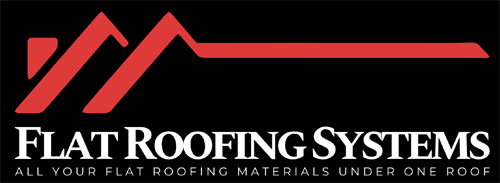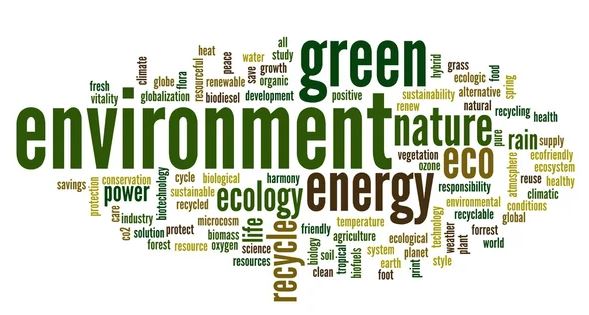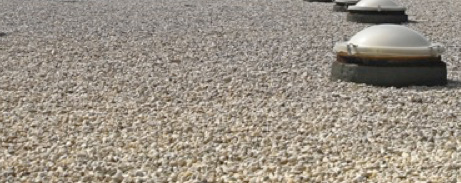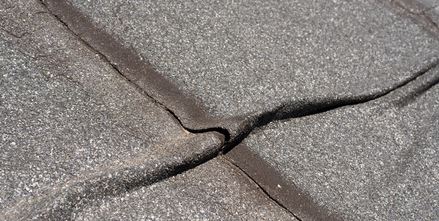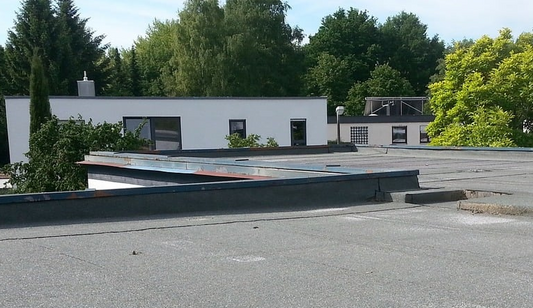Key Points
- EPDM roofing is recyclable, reducing landfill waste and conserving new resources.
- The production of EPDM is less energy-intensive than other roofing materials, minimizing ecological impact.
- EPDM's durability and UV resistance extend its lifespan, decreasing the frequency of roof replacements.
- Reflective coatings on EPDM can improve building energy efficiency by reducing cooling costs.
- Installation of EPDM minimizes site disturbance and uses low-emission adhesives, enhancing its environmental friendliness.
Composition of EPDM Roofing
EPDM roofing, primarily made of ethylene, propylene, and a minor yet essential amount of diene monomer, offers robust durability and versatility.
You'll find this material is a popular choice for low-slope buildings due to its remarkable resistance to ultraviolet (UV) radiation, ozone, and weathering.
The composition of EPDM allows it to retain its flexibility over a wide temperature range, making it adaptable to various climates.
The unique blend of these compounds results in a membrane that's not only long-lasting but also environmentally friendly.
EPDM is often favored for projects where eco-conscious choices are prioritized.
The material itself is recyclable at the end of its life, reducing its environmental footprint.
Additionally, the production process of EPDM is less energy-intensive compared to other roofing materials, which further minimizes its overall ecological impact.
When you're considering a roofing solution, it's pivotal to weigh how the materials are produced and what happens after their useful life ends.
EPDM's composition guarantees that you're choosing a sustainable option that contributes positively to environmental conservation while providing a practical, effective solution for your roofing needs.
Lifespan and Durability Benefits
One of the standout features of EPDM roofing is its impressive lifespan, often exceeding 20 years with proper maintenance.
You'll find that this durability isn't just about longevity; it's also about resilience. EPDM roofs are remarkably resistant to weathering, abrasion, and extreme temperature fluctuations. This means less frequent replacements and repairs for you, which in turn reduces waste and conserves resources.
Moreover, the inherent stability of EPDM material means it doesn't degrade under UV rays as quickly as other roofing materials.
You won't be dealing with the cracking or leaking that often plagues less sturdy options. This reliability guarantees that you're not only saving on direct repair costs but also avoiding potential damage to your building's interior, which can be costly.
Additionally, EPDM's ability to retain its properties over time contributes to its overall cost-effectiveness.
While the initial investment might be higher than some alternatives, the long-term savings are significant. You're looking at decreased maintenance costs, reduced need for cooling due to its excellent thermal resistance, and an overall longer lifecycle, which translates directly into savings and less environmental strain.
Fundamentally, EPDM roofing lets you enjoy a robust, low-maintenance roof while contributing to sustainable building practices.
Production Environmental Footprint
While considering the advantages of EPDM roofing, it's also essential to examine its production environmental footprint.
As you explore sustainable roofing options, understanding the impact of manufacturing EPDM is pivotal.
1. Resource Extraction: EPDM is primarily made from ethylene, propylene, and diene, deriving from petroleum and natural gas.
The extraction of these resources can be energy-intensive and environmentally demanding, contributing to its ecological footprint.
2. Chemical Processing: The production of EPDM involves complex chemical reactions.
These processes require energy and can generate waste products that need careful handling to mitigate environmental damage.
3. Transportation of Raw Materials: The components used in EPDM roofing often travel long distances from source to factory.
This transportation contributes to greenhouse gas emissions, a significant consideration in evaluating the overall sustainability of EPDM roofing.
4. Factory Emissions: The factories that produce EPDM emit various pollutants, including VOCs (Volatile Organic Compounds).
However, many manufacturers are adopting cleaner technologies and practices to reduce these emissions, improving the sustainability profile of EPDM production.
Understanding these aspects helps you make an informed decision about whether EPDM roofing aligns with your environmental values and goals.
Energy Efficiency Features
After examining the environmental impact of EPDM roofing production, it's equally important to weigh its performance as an insulator.
You'll find that EPDM rubber roofing membrane excels in this department, contributing notably to energy savings in buildings. Its dark surface efficiently absorbs heat during colder months, reducing the need for heating and thereby lowering energy consumption.
In warmer climates, though, you might think this absorption could be a drawback. However, the innovative use of reflective coatings on EPDM can redirect sunlight, helping to keep buildings cool and slashing air conditioning costs.
Moreover, EPDM's impressive thermal resistance is a game-changer. It provides outstanding insulation, which means less energy is needed to maintain comfortable indoor temperatures.
This isn't just good for your wallet; it's also beneficial for the environment as it reduces the building's carbon footprint through decreased energy usage.
The energy efficiency of EPDM roofing doesn't stop at its insulating properties. Its longevity means that you won't be replacing it as often as other materials.
Fewer replacements mean less production, transportation, and installation energy over time, enhancing its sustainable profile.
Installation Impact on Environment
Addressing the installation impact of EPDM roofing on the environment reveals some critical considerations.
When you choose EPDM for your roofing needs, you're engaging with a process that's designed to minimize environmental harm.
However, it is crucial to be aware of specific aspects during the installation phase that can influence its eco-friendliness.
1. Energy Use: Installation of EPDM roofing typically requires less energy compared to traditional materials like asphalt shingles. This is due to the simplicity of the installation process, which generally involves fewer energy-intensive tools.
2. Emissions: While EPDM installation results in lower emissions than many other roofing types, the transportation of materials to the site and the use of adhesives and sealants can contribute to your carbon footprint.
Selecting low-emission adhesives can mitigate this impact.
3. Site Disturbance: EPDM can be installed with minimal disruption to the surrounding environment.
Unlike some roofing materials that generate considerable debris and noise, EPDM sheets are large and require less equipment, reducing overall site disturbance.
4. Material Efficiency: EPDM roofing materials are known for their cut-to-fit feature, which reduces on-site waste generation.
Planning your layout carefully guarantees maximum material utilization, further decreasing the environmental burden.
Recycling and Waste Reduction
Recycling your EPDM roofing materials substantially reduces the environmental impact of your project.
By choosing to recycle, you're not just cutting down on waste—you're also conserving resources and energy that would otherwise be spent on producing new materials. EPDM, being a synthetically produced rubber, requires significant resource input during manufacturing, so every bit you recycle makes a considerable difference.
Let's dive deeper into how you can make this happen.
First, it's vital to partner with a roofing contractor who prioritizes sustainability.
These professionals are well-versed in responsibly disposing of EPDM materials and may even have systems in place to guarantee the material is processed correctly.
This can include grinding down old EPDM to be reused in new roofing applications or other rubber products, which keeps it out of landfills.
Moreover, check if the manufacturer of your EPDM roofing offers a take-back program.
Such initiatives are designed to reclaim used roofing material for recycling, further closing the loop on waste.
Impact on Local Ecosystems
EPDM roofing materials substantially affect local ecosystems when not managed properly.
If you're considering EPDM for your next roofing project, it's vital to understand its potential environmental impacts. These synthetic materials can disrupt local wildlife and plant life, particularly if remnants are left in nature during installation or demolition.
To mitigate negative effects and enhance the positive, consider the following points:
- Habitat Disturbance: EPDM installation can lead to habitat disruption. Verify that your contractor minimizes landscape damage and disturbance to local flora and fauna.
- Chemical Runoff: Improper handling can cause harmful chemicals to leach into the soil and waterways, affecting aquatic life. Use products certified for low chemical emissions.
- Thermal Regulation: EPDM roofs can alter microclimates around buildings, potentially affecting nearby ecosystems. Opting for lighter-colored or coated EPDM can help reflect sunlight and reduce heat absorption.
- Waste Management: Discarded EPDM can be harmful if not disposed of responsibly. Engage in recycling efforts and verify all waste is handled according to environmental safety standards.
Cost Analysis Versus Sustainability
When evaluating the costs of EPDM roofing, you must also consider its sustainability benefits. Initially, the price tag might seem higher than traditional materials, but let's break down why it's worth it.
Firstly, EPDM roofs have a longer lifespan, stretching up to 50 years with proper maintenance.
You'll replace your roof less often, which saves money in the long run. Additionally, the material's durability means fewer repairs, reducing your ongoing maintenance expenses.
Energy efficiency is another key factor.
EPDM roofing reflects heat, particularly when treated with a white coating, leading to substantial savings on cooling costs. This thermal regulation means you use less energy, helping you cut down on utility bills season after season.
Installation costs are also lower compared to other high-end materials.
EPDM can be installed quickly and doesn't require specialized tools, trimming down labor costs. Plus, its lightweight nature often means you don't need to reinforce your roof structure, sidestepping another potential expense.
Future of EPDM in Green Building
Looking ahead, the role of EPDM in green building practices appears increasingly promising.
As you dive deeper into sustainable construction, you'll find that EPDM roofing isn't just another material; it's a smart choice for the future.
Here's why:
1. Increased Durability: EPDM roofs have a lifespan that outstrips many traditional materials, often lasting 50 years or more with proper maintenance.
This longevity reduces the need for frequent replacements, thereby minimizing environmental impact and resource consumption.
2. Energy Efficiency: EPDM's dark color helps in absorbing heat during colder months, reducing the need for heating.
Conversely, its reflective properties can be enhanced with coatings to keep buildings cool in summer, slashing air conditioning costs and energy use.
3. Recyclability: At the end of its life, EPDM can be recycled into new roofing products and other rubber-based items.
This capability supports the circular economy, reducing landfill waste and encouraging the reuse of materials.
4. Compatibility with Green Technologies: EPDM roofing is compatible with various eco-friendly building enhancements, including solar panel installations and green roofing systems.
This versatility makes it an attractive option for sustainable building projects.
Embrace EPDM as your go-to for a greener future in construction!
Rounding Up
You've seen how EPDM roofing stands out as a sustainable option. Its long lifespan and durability minimize frequent replacements, reducing waste. Energy-efficient properties of EPDM help lower heating and cooling costs, easing the strain on your wallet and the environment. Plus, its ability to be recycled shows commitment to sustainability. As you consider cost versus benefits, remember that investing in EPDM contributes positively to green building trends, ensuring a healthier planet for future generations. Embrace EPDM for a sustainable future.
